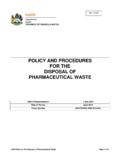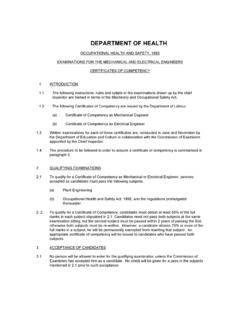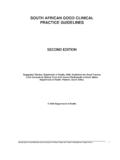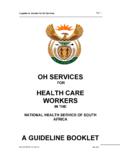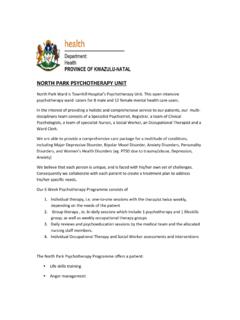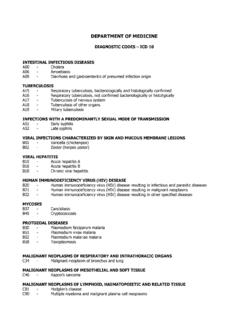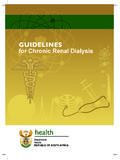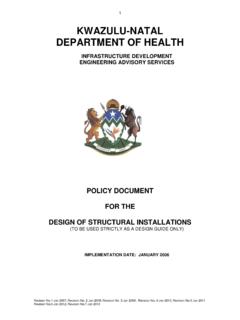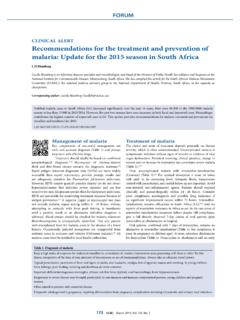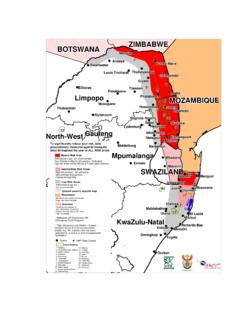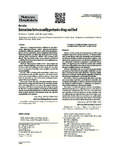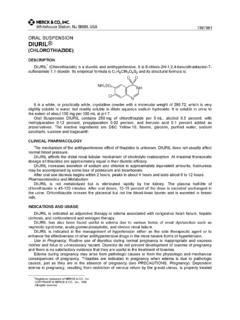Transcription of South African Hypertension Guideline 2011
1 1. IntroductionThis is the 5th Hypertension Guideline published by the Southern African Hypertension Society (SAHS). It is an important step towards implementing a national standard to improve the quality of care for persons living with Hypertension . The realistic objectives described can be applied widely and aim to diminish the impact of Hypertension and related cardiovascular disease (CVD) risk in South Africa. Previous versions of the SAHS Guideline emphasised improved diagnosis and treatment, tighter control and risk factor Other guidelines support the same trends and the movement to evidence-based The SAHS continuously reviews its Guideline , given the changing nature of the criteria of BP 160/95 mmHg or persons aged >18 years receiving antihypertensive medication.
2 The 1998 South African Demographic and Health Survey estimated that there were million people with Hypertension in the Acceptance of the international definition of Hypertension (BP 140/90 mmHg; used in this Guideline ) adds a further million people to this hypertensive CVD was previously ranked as the second highest cause-of-death category in South This has major cost implications for a developing country and requires a national strategy for prevention and management. Hypertension is a global health burden affecting developed and developing countries, including South The high prevalence of Hypertension worldwide contributes to the present and anticipated pandemic of CVD, which is of particular concern in developing The control of Hypertension , together with the curbing of other major risk factors such as cigarette smoking, dyslipidaemia and diabetes mellitus, constitutes the ideal approach to the primary prevention of atherosclerotic disease, and remains a major challenge for the community.
3 The trend towards comprehensive cardiovascular (CV) risk factor management is the internationally accepted model of is a major and costly contributor to CVD: it accounted for R4 - 5 billion in direct and indirect expenditure in 1991,15 and was previously shown to constitute of the direct total healthcare spend in South This Guideline has adopted an evidence-based approach to the estimation of CVD risk, intended to allow the treatment of patients at highest risk and those who can benefit most from lifestyle and drug interventions at the lowest cost, given the country s limited Objective and methodologyThe objective of this Guideline is to promote evidence-based, accessible.
4 And comprehensive management of Hypertension by healthcare professionals in the public and private sectors in South Africa. It should act as a resource document to inform hypertensive patients of the national approach to Hypertension care. For development of this Guideline , Hypertension and CVD treatment and prevention guidelines were reviewed, as well as Hypertension trials reporting clinical end-points, including individuals with important co-morbidities, such as diabetes mellitus and chronic kidney disease (CKD). South African Hypertension Guideline 2011Y K Seedat, B L RaynerOutcomes.
5 Extensive data from randomised controlled trials have shown the benefit of treating Hypertension . The target blood pressure (BP) for antihypertensive management is systolic <140 mmHg and diastolic <90 mmHg with minimal or no drug side-effects; however, stricter BP control is required for patients with end-organ damage, co-existing risk factors and co-morbidity, diabetes mellitus. The reduction of BP in the elderly and in those with severe Hypertension should be achieved gradually over 1 month. Co-existent risk factors should also be Benefits of management include reduced risks of stroke, cardiac failure, chronic kidney disease and coronary heart The correct BP measurement procedure is described, and evaluation of cardiovascular risk factors and recommendations for antihypertensive therapy are stipulated.
6 The total cardiovascular disease risk profile should be determined for all patients to inform management strategies. Lifestyle modification and patient education are cornerstones in the management of every patient. Major indications, precautions and contraindications to each recommended antihypertensive drug are listed. Combination therapy should be considered ab initio if the BP is 20/10 mmHg above goal. First-line drug therapy for uncomplicated Hypertension includes low-dose thiazide-like diuretics, calcium channel blockers (CCBs) or angiotensin-converting enzyme inhibitors (ACE-Is) (or ARBs - angiotensin II receptor blockers).
7 If the target BP is not obtained, a second antihypertensive should be added from the aforementioned list. If the target BP is still not met, the third remaining antihypertensive agent should be used. In black patients either thiazide-like diuretics or CCBs can be used initially, because response rates are better than with ACE-Is or -blockers. In treating resistant Hypertension , a centrally acting drug, vasodilator, -blocker, spironolactone or -blocker should be added. This Guideline includes management of specific situations, hypertensive emergency and urgency, severe Hypertension with target organ damage, Hypertension in diabetes mellitus, resistant Hypertension , fixed drug combinations, new trials in Hypertension , and interactions of antihypertensive agents with other The Guideline was developed by the Southern African Hypertension Afr Med J 2012.
8 102 Guideline Working Group, Southern African Hypertension Society, and Nelson Mandela School of Medicine, Faculty of Health Sciences, University of KwaZulu-Natal, DurbanY K Seedat, MD, PhD, FRCP (London), FCP (SA) Hypertension Clinic, Department of Medicine, Faculty of Health Sciences, University of Cape Town, and Groote Schuur Hospital, Cape TownB I Rayner, MB ChB, FCP (SA), MMedCorresponding author: Y K Seedat 2012, Vol. 102, No. 1 SAMJ603. Measurement of BPBlood pressure (BP) measurement is a vital clinical sign, but can be poorly performed by healthcare professionals. Published recommendations of the European Hypertension Society and the American Heart Association are endorsed by the Hypertension Working , Generic measurement principlesThese recommendations are generic and apply equally to all validated devices, especially in clinic and self BP monitoring (SBPM); considerations include arm position, posture of the patient, cuff size and the number of readings that should be taken.
9 BP should be recorded using an approved device with the patient seated for at least 5 minutes before measurement (with the back supported, and arm bared and resting on a surface at heart-level). Patients should not have smoked, or ingested caffeine-containing beverages or food in the preceding 30 minutes. In persons aged 60+ years, those with diabetes mellitus and others at risk (Table III), the BP should also be recorded after the patient has stood for 1 minute, to document postural appropriate size cuff should be used: a standard cuff (12 cm) for a normal arm and a larger cuff (15 cm) for an arm with a mid-upper circumference >33 cm; the bladder within the cuff should encircle 80% of the arm.
10 If an undersized cuff is used, the BP can be overestimated (under-cuffing); the BP can equally be underestimated (over-cuffing) if the cuff and bladder are too blood pressure (SBP) and diastolic blood pressure (DBP) should be recorded. BP should be measured in both arms at the initial consultation; if there is a discrepancy, it should subsequently be taken in the arm with the higher BP. SBP should be estimated first by palpation to avoid missing the auscultatory gap. SBP is measured at the first appearance of sound (Phase I) and DBP is measured at the disappearance of sound (Phase V).
